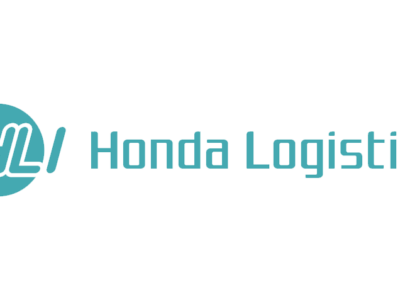How Accounts Payable can turn a profit: An AP automation case study

Nowhere is the increase in automation spending more vital than in paper based finance departments, where almost a third of employees’ time is wasted by inefficient, costly practices. In the worst case scenario, lengthy AP (Accounts Payable) processes alienate suppliers, creating friction that limits a company’s leverage and strains professional relationships.
However, one trailblazing company — Honda Logistics North America — has not only optimised their department through innovative AP automation, but in doing so, has managed to turn a profit.
Recently, we spoke to Honda Logistics North America’s Accounts Payable Supervisor for Finance & Treasury, Brad Gerritsen, to find out more. In this AP automation case study, we explore how finance departments can achieve AP automation in their businesses, what finance leaders need to watch out for and what finance departments need to do now to get started.
What are the benefits of AP automation?
Payments are received faster, but there are other reasons why AP automation benefits vendors. With electronic proof of sending, Gerritsen’s team can always track down an invoice and confidently determine when the error was on the vendor’s side.
Thanks to Tungsten Network’s Total AP, Gerritsen not only knows whether Honda received an invoice, but can rapidly find out who received it, ensuring full accountability. Other internal benefits of AP automation include the rapid onboarding of new employees. Gerritsen reports that he can now induct new staff on the automated AP process within thirty minutes.
However, finance leaders can still struggle when drawing together the AP automation business case. Gerritsen has some advice on ways to overcome typical internal challenges.
What are the challenges of introducing AP automation?
Honda is an established brand with a long, proud history. Unfortunately, traditional workforces are resistant to change and have to trust that the system is going to work. Gerritsen advises that finance leaders can counteract resistance by bringing users in for training as early as possible.
Gerritsen also recommends that finance leaders proactively tell vendors about the new system ahead of time. Vendors can send invoices in the preferred format sooner, which makes transitioning to the new system easier.
“Don’t just focus on automating the AP process, think about how automation will affect each department across the companies your new system touches.”
Analysing the results of an AP automation business case
By using Tungsten Network’s Total AP service, Honda North America has managed to:
- Guarantee all invoices are validated within 48 hours
- Permanently avoid late fees
- Take advantage of all rapid-payment discounts from vendors
- Proactively request additional discounts for rapid payment to vendors.
Be patient with vendors
Not every vendor will adjust to the new system, which is why Gerritsen also strongly recommends using a service that can convert different formats into a PDF. Gerritsen also recommends patience, as finance automation is a gradual process for some, requiring steady encouragement.
The internal effect of AP automation
Gerristen maintains an AP department of two personnel, who collectively process 115,000 invoices a year. With Total AP, managers and users can check their own systems for the status of invoices, reducing the need for time consuming calls to finance departments that drain productivity.
Leveraging historical data, Gerritsen’s team are empowered to analyse patterns and take action to ensure that the system becomes even more efficient. Internal trust in his department is strengthened across the business, especially considering his department can post profit through a carefully managed AP automation process.
Transformation in finance: Turning AP into a profit centre
By moving away from paper checks, to ACH (Automated Clearing House) or SUA (Single Use Account) processes, finance leaders can:
- Reduce fraud
- Remove mail float
- Reduce costs from check stocks and printers.
However, saving money is only the first part of world-class AP automation. Here’s how Gerritsen posts a profit on AP invoices.
How it works
SUAs work like a virtual credit card issued by a bank. So long as the vendor in question accepts credit card payments in the course of their business, you can pay costs via an SUA.
AP departments essentially make a remittance on specific invoices, processing them as credit card payments. The bank is notified, but a credit card statement won’t come back for fifteen days, allowing AP teams to hold on to the money for a short time. When the credit card statement comes in, the AP team has thirty days to pay the balance. At the end of the year, a rebate on the SUA is credited to the AP department, turning it into a profit generating operation.
However, if vendors charge a service fee for paying by SUA, it’s better to pay them via ACH instead. You don’t want your end of year rebate to be cancelled out by service fees.
Key learnings from an AP automation case study
No company will ever get away from paper checks completely, but automating AP can make finance functions profit-generating entities. Honda’s example demonstrates what’s possible when finance leaders partner with cutting edge technology providers to automate historically inefficient processes.
Proactively deliver profit with Total AP control
Automate your AP department to eliminate inefficiencies and make your company money. Leverage a highly effective AP automation and analytics tool that can transform your finance operations with Total AP from Tungsten Network.
Interested in learning more?
Get in touch with us today to begin your journey to world-class finance optimisation.



